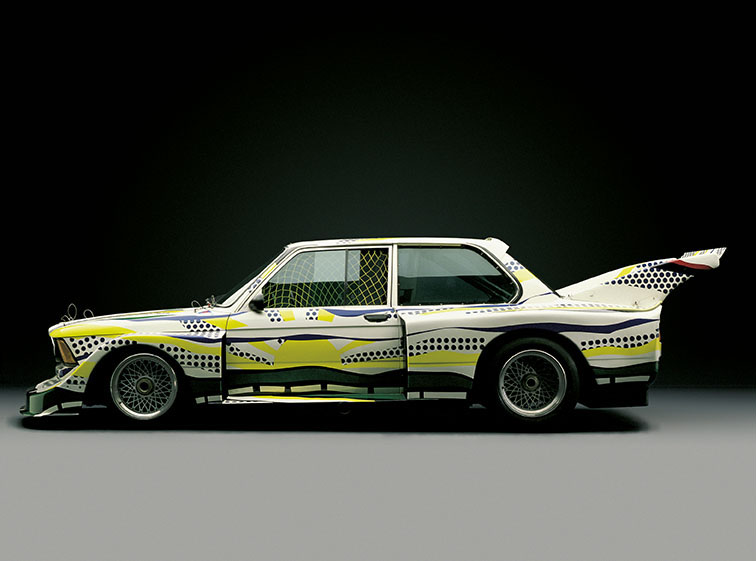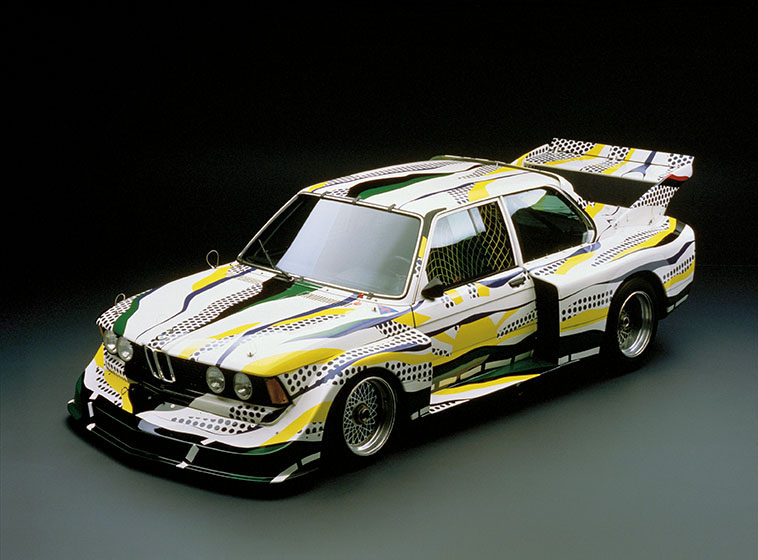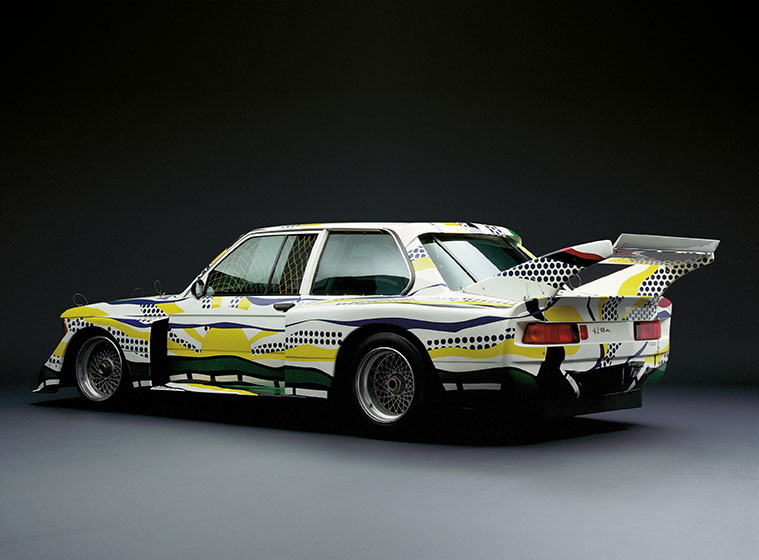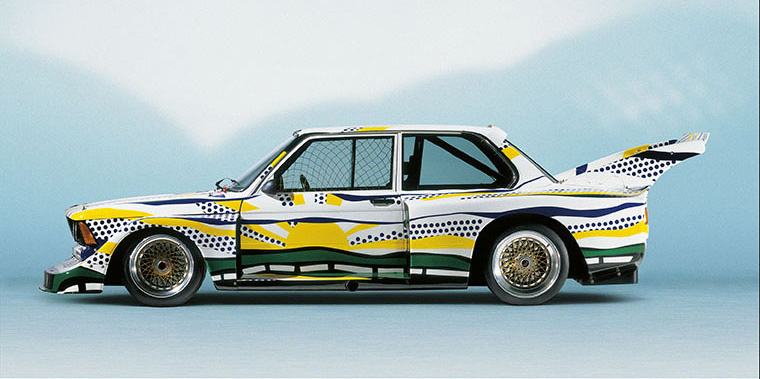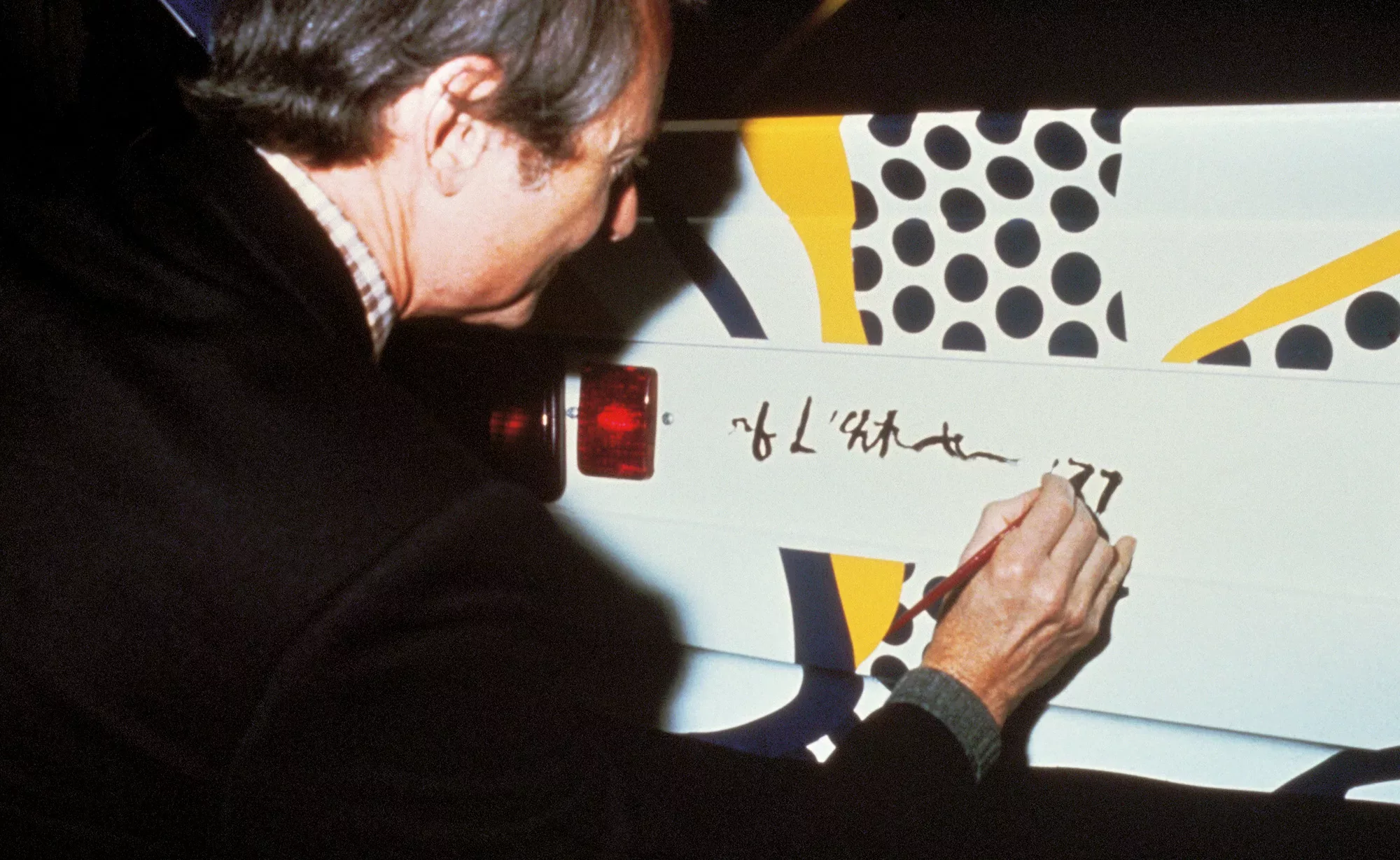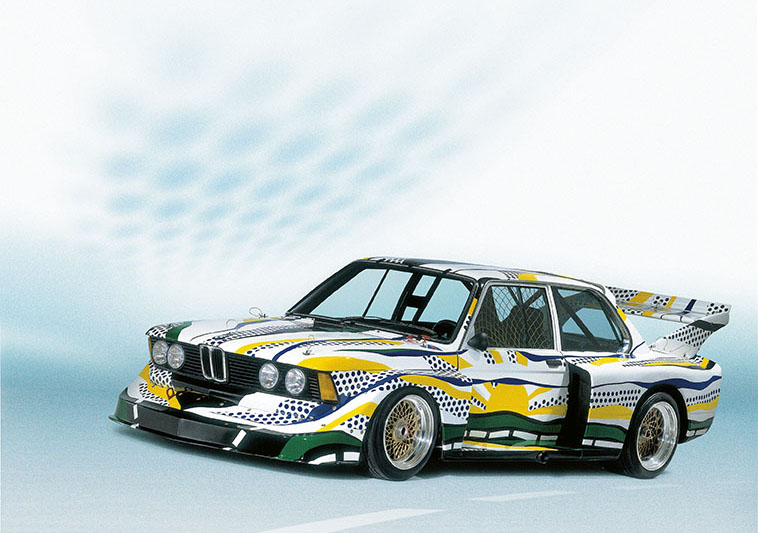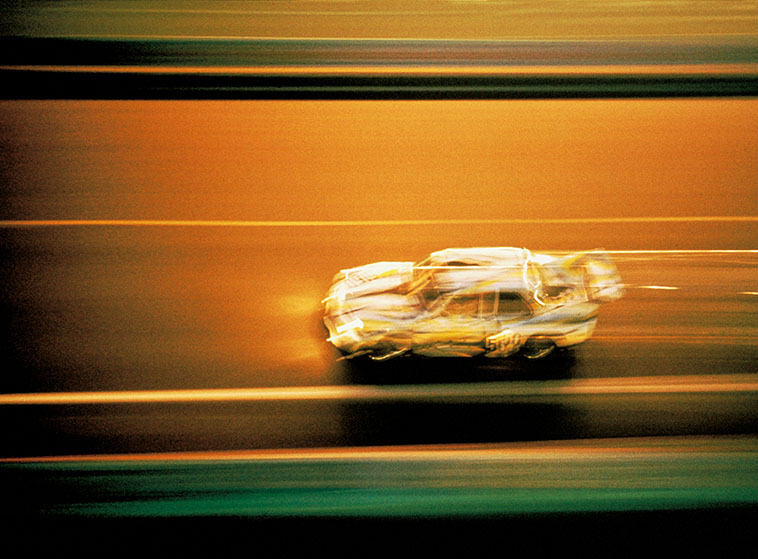Roy Lichtenstein
I wanted the lines I painted to be a representation of the road that showed the car where it had to go, Roy Lichtenstein said of his design for the BMW 320. The design also shows the landscape through which the car has traveled. You could call it a summary of everything a car experiences — except this car reflects all of these things before it has actually been on a road. And indeed, if you look closely, you can see a passing landscape. The oversized Benday Dots are characteristic and reminiscent of Lichtenstein’s world- famous comic strip paintings.
American Pop Art
Born in New York in 1923, Roy Lichtenstein is considered one of the founders of American Pop Art. Until 1938, he painted portraits of jazz musicians, attended the Art Students League, and eventually studied art in Ohio. His early works range from cubism to expressionism. It was not until the late 1950s that he became interested in trivial culture such as comics and advertising. His Pop Art paintings began in 1961. These were followed by caricatures of the American way of life, experiments with famous works of art, sculptures, and films. He died in New York in 1997.
Specifications BMW 320 Group 5
- inline four-cylinder engine
- 4 valves per cylinder
- double overhead camshafts
- displacement: 2000 cm3
- power: 300 hp
- top speed: 257 km/h
24-hour race of Le Mans
After its completion, Roy Lichtenstein’s Art Car was able to celebrate its premiere twice, as a work of art in the Centre Pompidou in Paris and as a racing car in the 24-hour race of Le Mans in June 1977. The car was driven by Hervé Poulain and Marcel Mignot from France. The car with the number 50 achieved a ninth place in the overall standings and finished first in its class.

